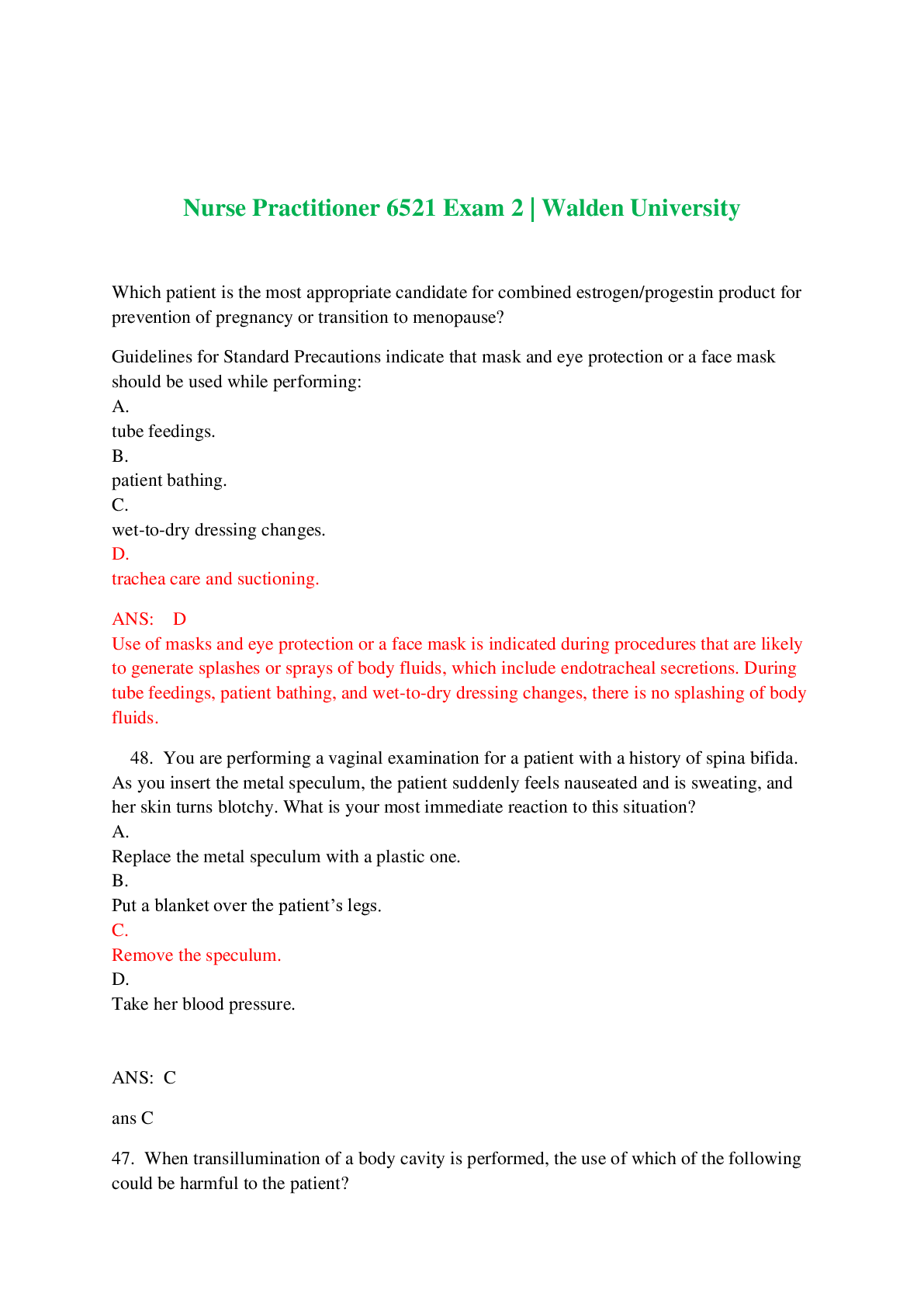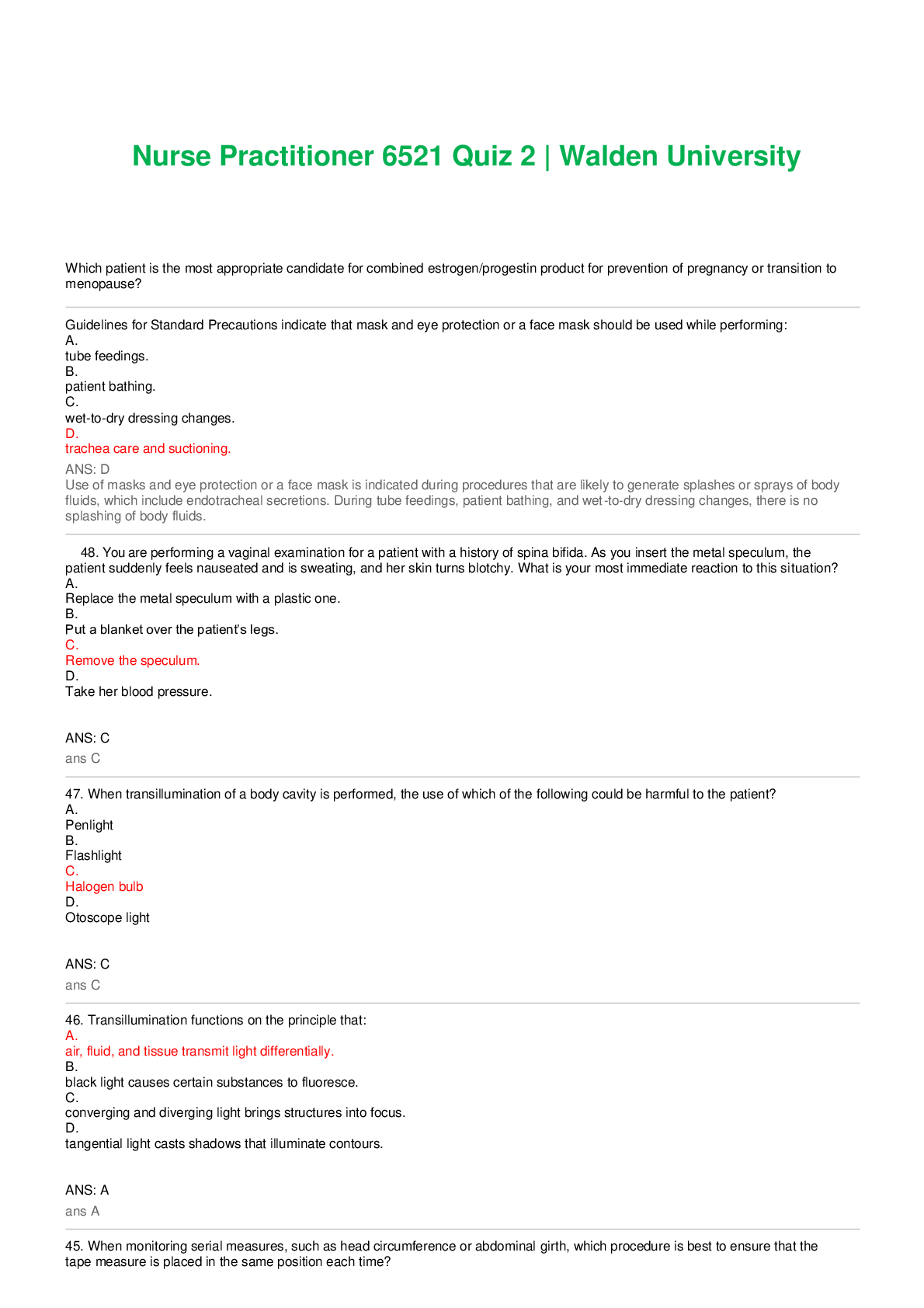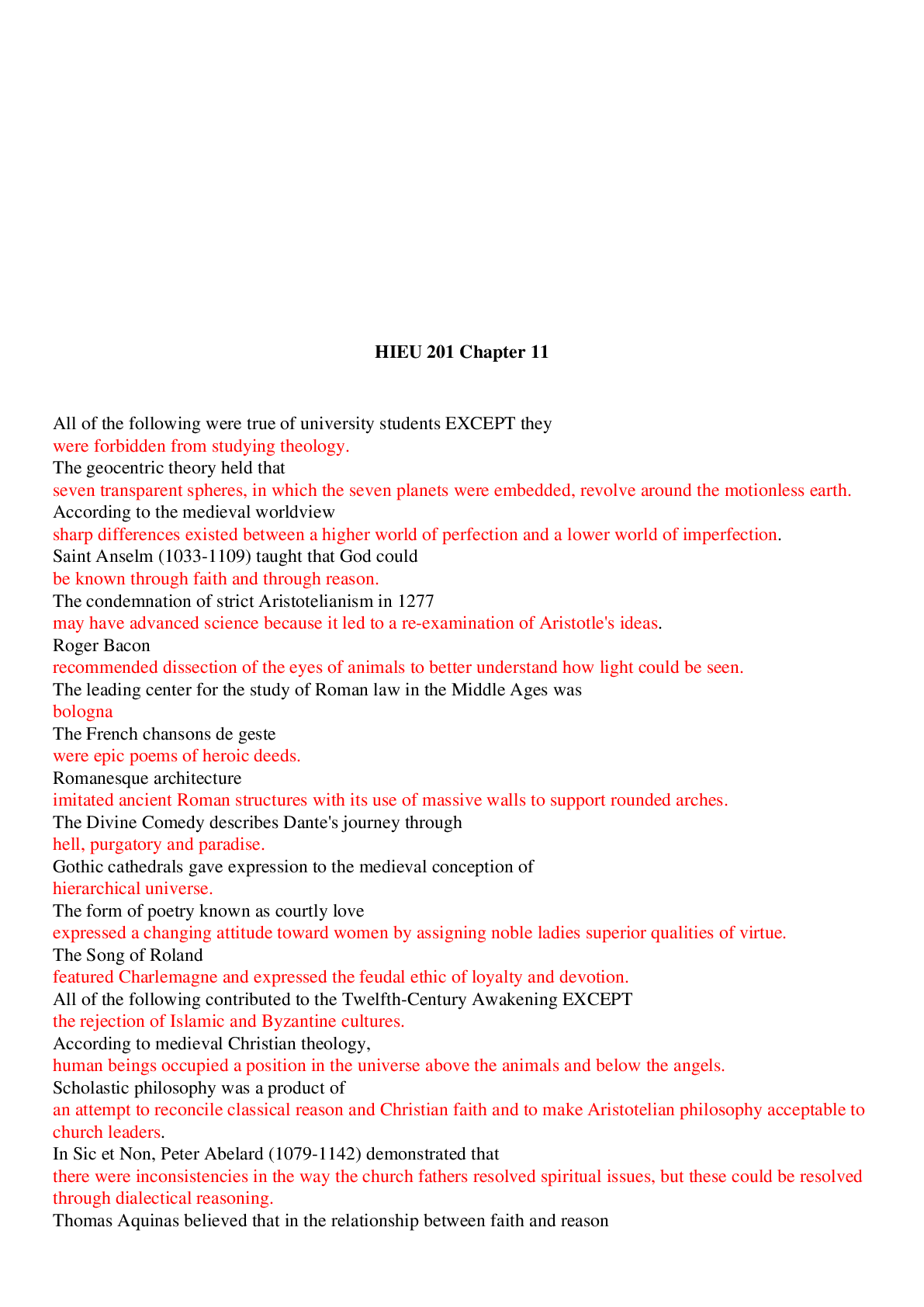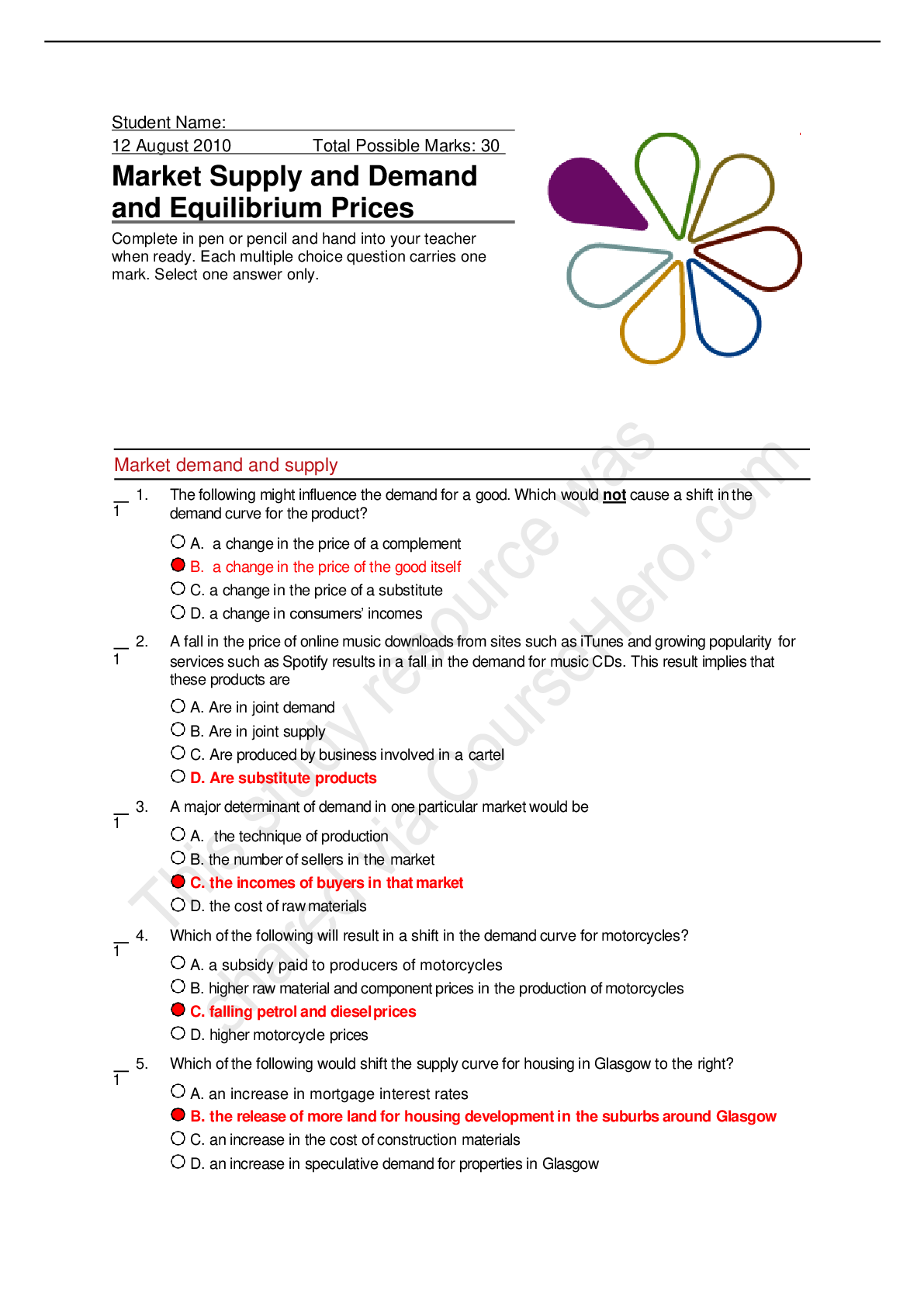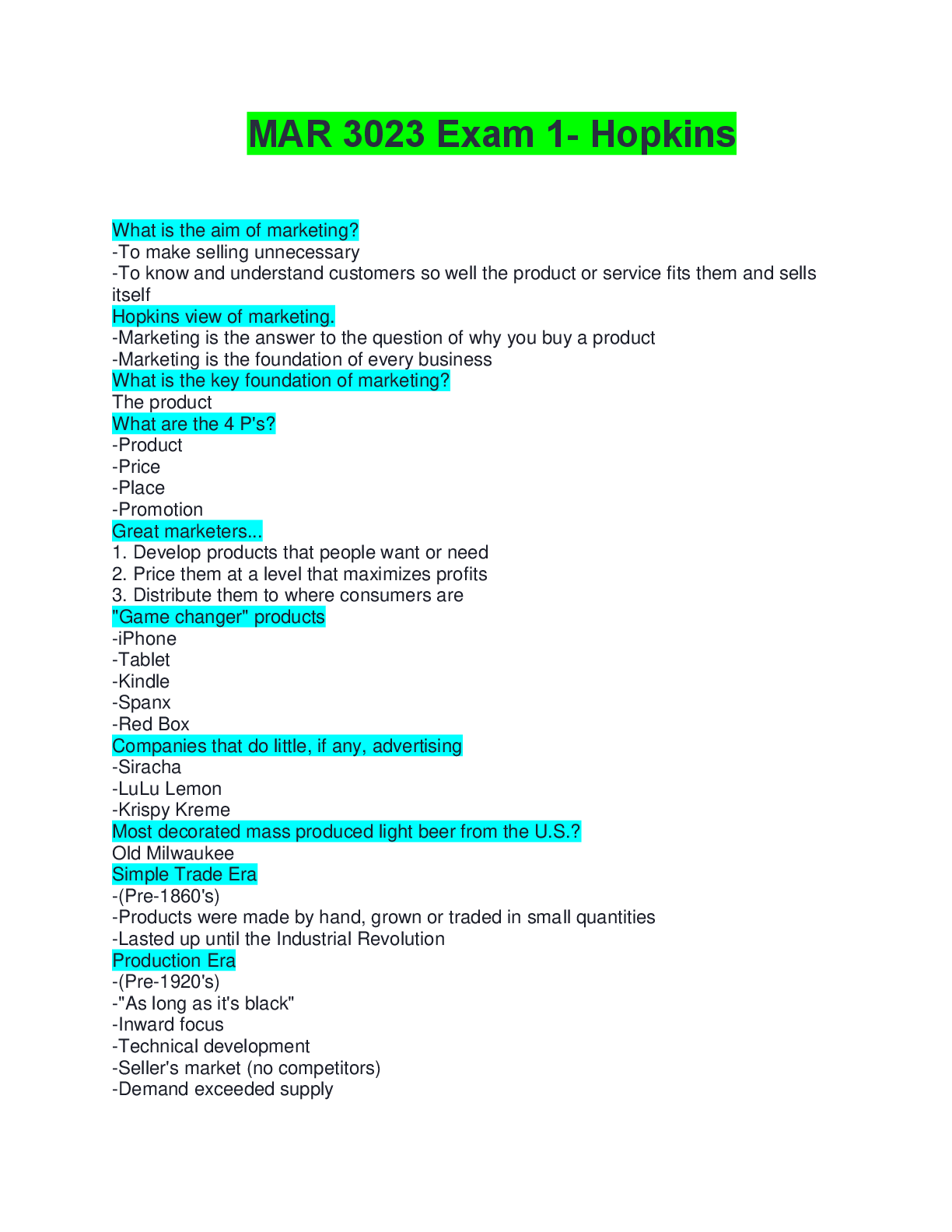Programming > EXAM > Exam > CSE 123Stats with Python. Statistics with Python | 1 | Descriptive Statistics (All)
Exam > CSE 123Stats with Python. Statistics with Python | 1 | Descriptive Statistics
Document Content and Description Below
tats with Python Statistics with Python | 1 | Descriptive Statistics Compute the following statistical parameters, and display them in separate lines, for the sample data set s = [26, 15, 8, 44, 26 ... , 13, 38, 24, 17, 29]: Mean, Median, Mode, 25th and 75th percentile, Inter quartile range, Skewness, Kurtosis. Hint: Import stats from scipy and set the interpolation parameter value to lower for computing the inter quartile range. Ans : import numpy as np from scipy import stats s = np.array([26, 15, 8, 44, 26, 13, 38, 24, 17, 29]) print(np.mean(s)) print(np.median(s)) print(stats.mode(s)) print(np.percentile(s, [25,75])) print(stats.iqr(s, rng=(25, 75), interpolation='lower')) print(stats.skew(s)) print(stats.kurtosis(s)) Statistics with Python | 2 | Random Distributions Problem Statement Create a normal distribution with mean 32 and standard deviation 4.5. Set the random seed to 1, and create a random sample of 100 elements from the above defined distribution. Compute the absolute difference between the sample mean and the distribution mean. Hint: Use the functions available in numpy and scipy. Ans : from scipy.stats import norm import numpy as np np.random.seed(1) distribution_mean = 32 sample = norm.rvs(loc=distribution_mean, scale=4.5, size=100) sample_mean = np.mean(sample) print('sample:', sample) print('sample mean:', sample_mean) abs_diff = abs(sample_mean - distribution_mean) print('absolute difference:', abs_diff) Statistics with Python | 3 | Random Experiment Problem Statement Simulate a random experiment of tossing a coin 10000 times, and determine the count of Heads returned. Hint: Define a binomial distribution with n = 1 and p = 0.5. Use binom function from scipy.stats. Set the random seed to 1. Draw a sample of 10000 elements from a defined distribution. Assume that the values '0' and '1' represent Heads and Tails respectively. Count the number of 'Heads' and display it. Make used of the 'bincount' method available in 'numpy'. Ans : import numpy as np from scipy.stats import binom np.random.seed(1) data_binom = binom.rvs(n=1,p=0.5,size=10000) y = np.bincount(data_binom) head = print(y[0]) print(head) Statistics with Python | 4 | Hypothesis Testing 1 Problem Statement Consider the following independent samples s1 and s2: s1 = [45, 38, 52, 48, 25, 39, 51, 46, 55, 46] s2 = [34, 22, 15, 27, 37, 41, 24, 19, 26, 36] The samples represent the life satisfaction score (computed through a methodology) of older adults and younger adults respectively. Compute t-statistic for the above two groups, and display the t-score and p value in separate lines. Hint: Use the ttest_ind function available in scipy. Ans: from scipy import stats import numpy as np s1 = [45, 38, 52, 48, 25, 39, 51, 46, 55, 46] s2 = [34, 22, 15, 27, 37, 41, 24, 19, 26, 36] t, p = stats.ttest_ind(s1, s2) print(t) print(p) Statistics with Python | 5 | Hypothesis Testing 2 Problem Statement A researcher noted the number of chocolate chips consumed by 10 rats, with and without electrical stimulation. The data set s1 represents consumption with stimulation, and s2 without simulation. s1 = [12, 7, 3, 11, 8, 5, 14, 7, 9, 10] s2 = [8, 7, 4, 14, 6, 7, 12, 5, 5, 8] Compute t-statistic for the above samples, and display the t-score and p-value in separate lines. Hint: Use the ttest_rel function available in scipy. Ans : from scipy import stats import numpy as np s1 = [12, 7, 3, 11, 8, 5, 14, 7, 9, 10] s2 = [8, 7, 4, 14, 6, 7, 12, 5, 5, 8] t, p = stats.ttest_ind(s1, s2) print(t) print(p) Statistics with Python | 6 | Linear Regression 1 Problem Statement Perform the following tasks: Load the R dataset mtcars. Capture the data as a pandas dataframe. Build a linear regression model with independent variable wt, and dependent variable mpg. Fit the model with data, and display the R-squared value. Ans: import statsmodels.api as sm import statsmodels.formula.api as smf mtcars_df = sm.datasets.get_rdataset("mtcars") mtcars_df = mtcars_df.data linear_model = smf.ols('wt ~ mpg', mtcars_df) linear_result = linear_model.fit() print(linear_result.rsquared) Statistics with Python | 7 | Linear Regression 2 Problem Statement Load the R data set mtcars as a pandas dataframe. Build another linear regression model by considering the log of independent variable wt, and log of dependent variable mpg. Fit the model with data, and display the R-squared value. Ans: import statsmodels.api as sm import statsmodels.formula.api as smf import numpy as np mtcars_df = sm.datasets.get_rdataset("mtcars") mtcars_df = mtcars_df.data linear_model = smf.ols('np.log(wt) ~ np.log(mpg)', mtcars_df) linear_result = linear_model.fit() print(linear_result.rsquared) Statistics with Python | 8 | Logistic R [Show More]
Last updated: 3 years ago
Preview 1 out of 17 pages
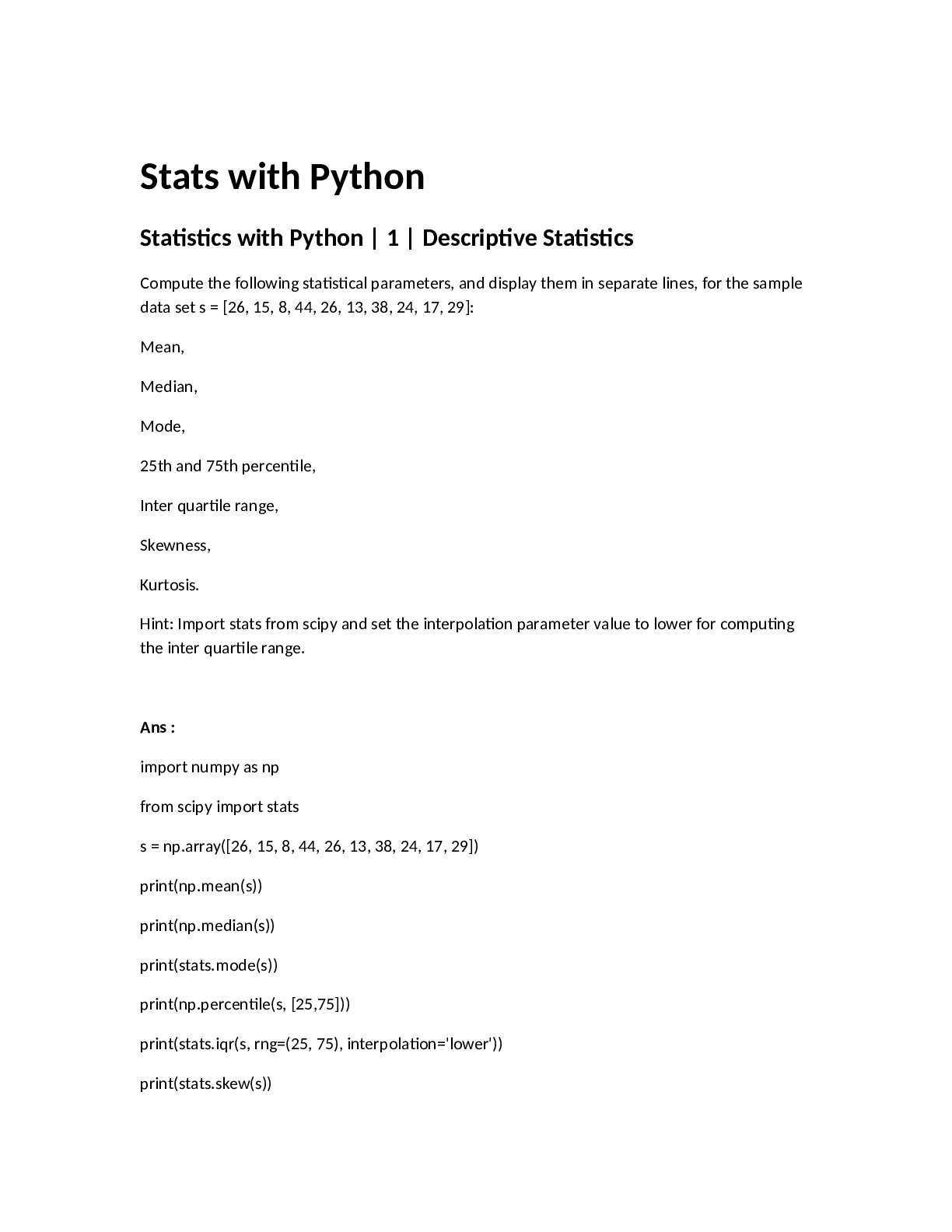
Buy this document to get the full access instantly
Instant Download Access after purchase
Buy NowInstant download
We Accept:

Reviews( 0 )
$12.00
Can't find what you want? Try our AI powered Search
Document information
Connected school, study & course
About the document
Uploaded On
Aug 25, 2021
Number of pages
17
Written in
All
Additional information
This document has been written for:
Uploaded
Aug 25, 2021
Downloads
0
Views
169





.png)

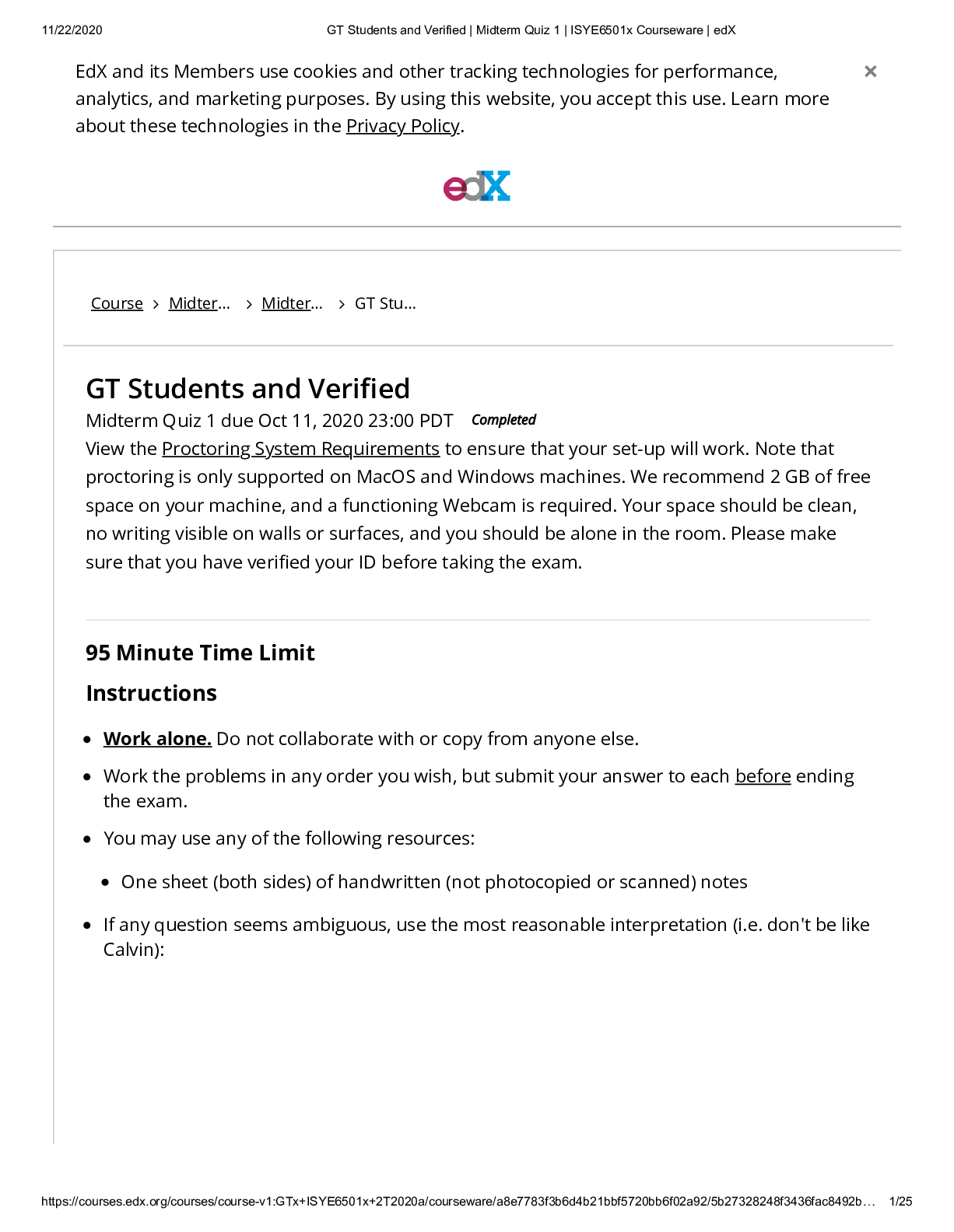


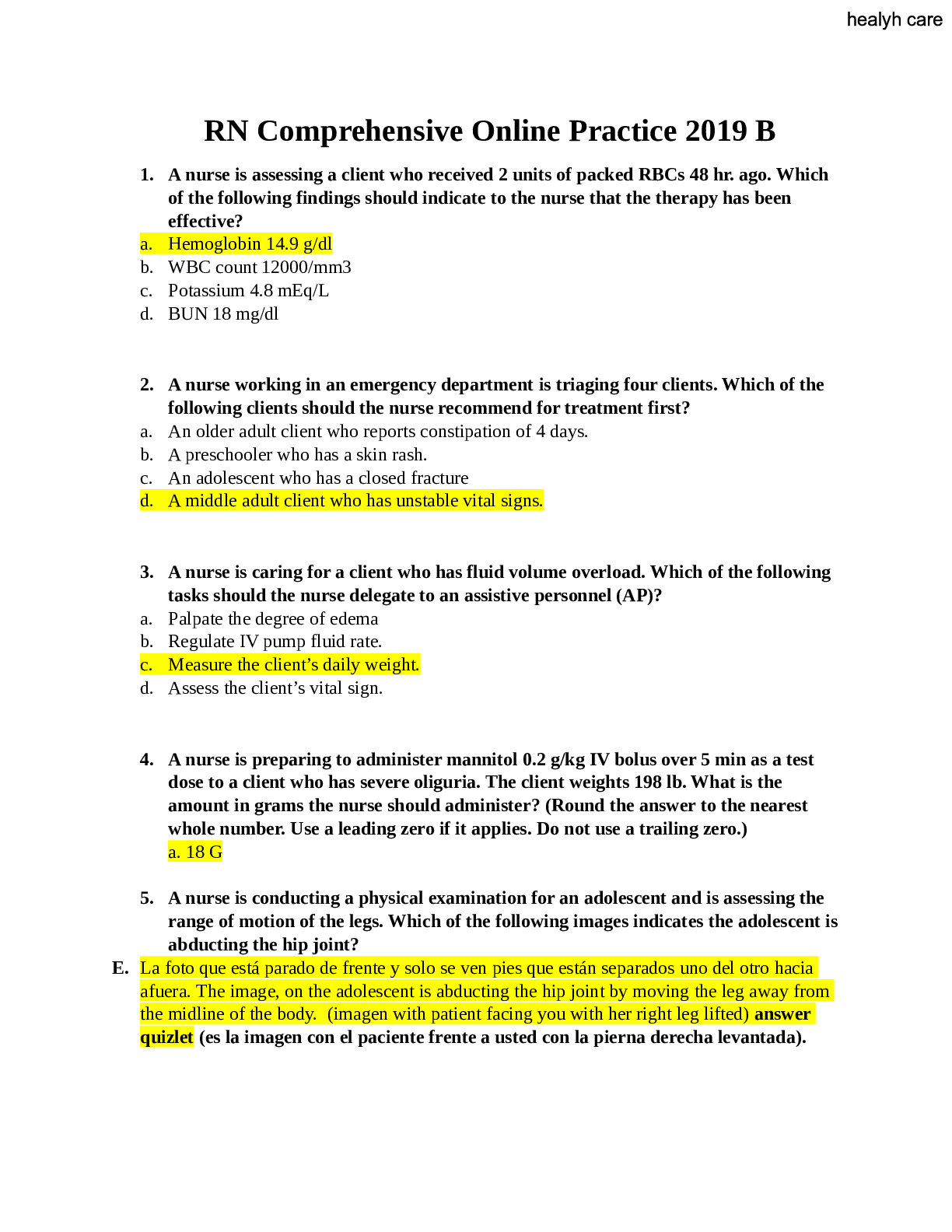
.png)
.png)


